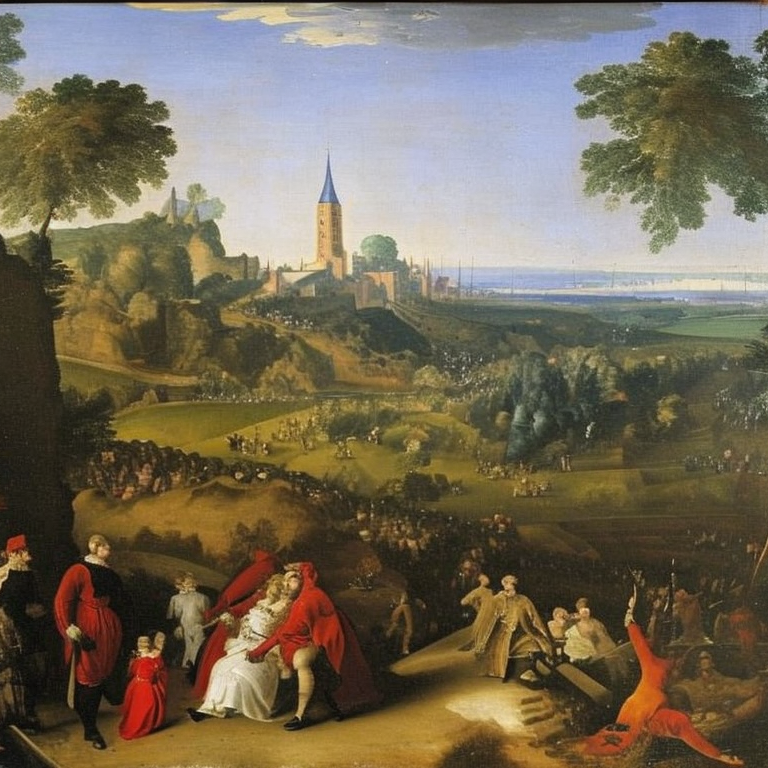The Impact of Religious and Global Conflicts on Europe’s Christian Commonwealths: An Expert Q&A
Summary
This expert Q&A delves into the concept of Christian commonwealths and how the Protestant Reformation created conflicts for rulers in Europe. It explores the complexities of managing religious pluralism and the breakdown of trust between rulers and the people. The discussion also highlights the impact of global trade and colonialism on Europe’s natural resources, environment, and social structures.
Table of Contents
- The Concept of Christian Commonwealths
- The Impact of the Protestant Reformation on Rulers
- Managing Religious Pluralism and Conflicts
- Global Trade and Colonialism
- The Complexities of a Divided Europe
- Conclusion
The Concept of Christian Commonwealths
Q: What were Christian commonwealths?
A: Christian commonwealths were political and social systems that were based on the mutual obligation between rulers and ruled, with obedience seen as divinely ordained. This meant that rulers should rule justly and in accordance with God’s laws. It was a concept that originated in medieval Europe and continued to evolve into the sixteenth and seventeenth centuries.
Q: How did Christian commonwealths influence European society?
A: Christian commonwealths were the foundation of European society, and they created a sense of purpose and duty that encouraged people to work together for a greater good. The concept of mutual obligation between rulers and ruled helped to create stability and a sense of order. However, as more people began to question the legitimacy of rulers and the Church, this stability began to waver.
The Impact of the Protestant Reformation on Rulers
Q: How did the Protestant Reformation impact rulers in Europe?
A: The Protestant Reformation created conflicts for rulers as defending the right religion could threaten the unity of the commonwealth. Moreover, not defending the right religion risked religious divisions tearing it apart. The conflicts were polymorphous and infected all social levels, making it difficult for magistrates to manage.
Q: How did rulers attempt to manage these conflicts?
A: Rulers attempted to maintain control by enforcing religious conformity. This was harder to enforce than religious observances, as plurality of beliefs created a contested legacy. Each confession attempted to define what people should believe, and these attempts at enforcing religious conformity stretched the limits of the mutual obligation between rulers and clerics.
Managing Religious Pluralism and Conflicts
Q: How did Europe’s Christian commonwealths manage religious pluralism?
A: Europe’s Christian commonwealths struggled to manage religious pluralism. Plurality of beliefs created conflicts, and each confession attempted to define what people should believe. This made it harder to enforce religious conformity and strained the mutual obligation between rulers and clerics. Ultimately, conflicts arose that weakened social cohesion, leading to a breakdown of trust between rulers and their people.
Q: How did these conflicts impact Europe’s economy?
A: The conflicts led to military activity rising to unprecedented levels in the 1550s, 1590s, and again from the 1620s, culminating in the later 1640s. This exacerbated Europe’s economic divergences and weakened social cohesion, leading to the first crisis a newly divided Europe.
Global Trade and Colonialism
Q: How did global trade impact Europe’s social structures?
A: The global trade of products like silk, spices, cotton, tobacco, and silver in the 16th century led to major social change and brutal labor coercion, such as in the mining operations in Mexico and Peru and on the Brazilian sugar plantations. European merchants became the dominant intermediaries in the global silver trade, thanks to their trading partnership with the Spanish galleons and the founding of chartered trading companies.
Q: What impact did colonialism have on Europe and its natural resources?
A: Europe’s overseas expansion was the result of colonial projects in America and giving birth to the idea of “Europe.” The word “Europe” replaced the term “Christendom.” The discovery of America in the European imagination enabled the reconfiguration of Christendom as a geographical entity, as a space they knew increasingly as “Europe” and prompted the metamorphosis into more geographically defined continents. This led to unprecedented pressures on natural resources, environmental degradation, and social strain.
The Complexities of a Divided Europe
Q: How did the global context impact Europe’s conflicts?
A: Europe’s conflicts were part of a global process of intense and sustained interaction between civilizations resulting from the interchange with other civilizations, especially those of Eurasia. The creation of global sea-lanes facilitated this process, resulting in the transfer of agricultural crops and wild plants across the continents, known as the Columbian Exchange. The introduction of new food crops and livestock fuelled population growth and became an essential part of a burgeoning capitalist global economy.
Q: What was the impact of a divided Europe?
A: The conflicts of Europe, both religious and political, created a divided Europe. The paroxysm of the mid-seventeenth century was the first crisis of a newly divided Europe. The world was becoming more interconnected, but Europe was becoming more divided.
Conclusion
In conclusion, the Q&A highlighted the complex issues surrounding Europe’s Christian commonwealths, the impact of the Protestant Reformation, and the challenges of religious pluralism and colonialism. It also explored how Europe’s conflicts were part of a global process and how these conflicts further divided an already strained Europe. Ultimately, the Q&A provides insights into the historical context of Europe’s struggles with division and conflict, which continue to reverberate in today’s modern world.







